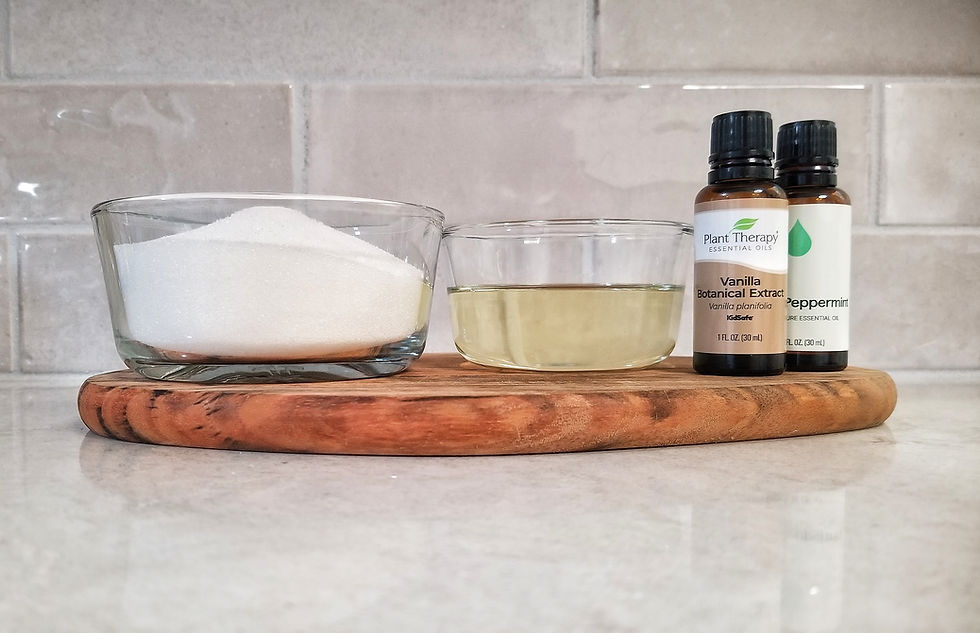How to Use an Aromatherapy Inhaler A Step-by-Step Guide for Beginners
- Jean McCabe
- Jun 21
- 3 min read
Aromatherapy inhalers are a convenient and portable way to experience the benefits of essential oils. Whether you're using them for relaxation, energy, or sinus relief, these inhalers are easy to use and can be tailored to meet your specific needs. Below, we outline the steps and tips for effectively using an aromatherapy inhaler.
What is an Aromatherapy Inhaler?
An aromatherapy inhaler is a small, cylindrical device designed to deliver the therapeutic benefits of essential oils through inhalation. It typically consists of a casing, a cotton wick that holds the essential oil, and a secure cap to preserve the scent. These inhalers are spill-proof, making them ideal for on-the-go use.
Benefits of Using an Aromatherapy Inhaler
· Portability: Compact and easy to carry in your pocket, purse, or bag.
· Privacy: Unlike diffusers, they provide a personal aromatherapy experience without
affecting those around you.
· Customizability: You can create your own blends of essential oils tailored to your needs.
· Long-lasting: Properly stored inhalers can last for several weeks to months.
Step-by-Step Guide to Using an Aromatherapy Inhaler
1. Assemble Your Inhaler
If you are creating your own aromatherapy inhaler, you'll need the following components:
· A blank inhaler (available at health stores or online).
· A cotton wick.
· Your chosen essential oils.
Add 15-20 drops of essential oil (or a blend) to the cotton wick. Insert the wick into the inhaler, seal it tightly, and replace the cap.
2. Open the Inhaler
When you're ready to use the inhaler, simply remove the cap. Hold the inhaler up to your nose, about 1-2 inches away from your nostrils.
3. Inhale Gently
Take a slow, deep breath in through your nose. Hold the breath for a moment before exhaling. Repeat this process 2-3 times to allow the essential oils to take effect. Avoid inhaling too forcefully, as this could irritate your nasal passages.
4. Store Properly
After using the inhaler, replace the cap securely to prevent the oils from evaporating. Store the inhaler in a cool, dark place to maintain its potency and longevity.
Tips for Optimal Use
· Choose High-Quality Essential Oils: Opt for 100% pure, therapeutic-grade oils to ensure safety and effectiveness.
· Experiment with Blends: Combine essential oils like lavender for relaxation, peppermint for focus, or eucalyptus for respiratory relief.
· Do Not Share: Aromatherapy inhalers are personal items and should not be shared to prevent cross-contamination.
· Limit Usage: Use the inhaler 2-3 times per session and no more than 5-6 times a day to avoid overexposure to essential oils.
Popular Essential Oil Blends for Inhalers
· For Stress Relief: Lavender, chamomile, and frankincense.
· For Energy: Peppermint, rosemary, and lemon.
· For Sinus Relief: Eucalyptus, tea tree, and peppermint.
· For Sleep Support: Lavender, Cedarwood, and Bergamot.
Safety Precautions
· Avoid Direct Contact: Essential oils should not touch your skin or mucus membranes without proper dilution.
· Check for Allergies: Perform a patch test with new essential oils to ensure you are not sensitive to them. To do this add a drop of essential oil to a small amount of carrier oil and apply to skin at the inner elbow, watch for signs of irritation, itchiness, redness, inflammation etc.
· If any sensory or tissue irritations develop (coughing, rhinitis, eye irritation, phlegm, hoarseness, headache, fatigue) while using the inhaler discontinue use immediately.
· Use Responsibly: If pregnant, nursing, or under medical care, consult a healthcare professional before using essential oils.
·
Troubleshooting Common Issues
· Weak Scent: If the scent fades over time, add a few more drops of essential oil to the wick.
· Inhaler Drying Out: Ensure the cap is tightly sealed when not in use.
· Too Strong Aroma: Hold the inhaler slightly farther from your nose to reduce intensity.
Conclusion
Aromatherapy inhalers offer an easy and effective way to incorporate the benefits of essential oils into your daily routine. By following this guide, you can make the most of your inhaler while ensuring safety and longevity. Whether you need a moment of calm, a boost of energy, or relief from congestion, aromatherapy inhalers are a versatile tool to support your well-being.




Comments